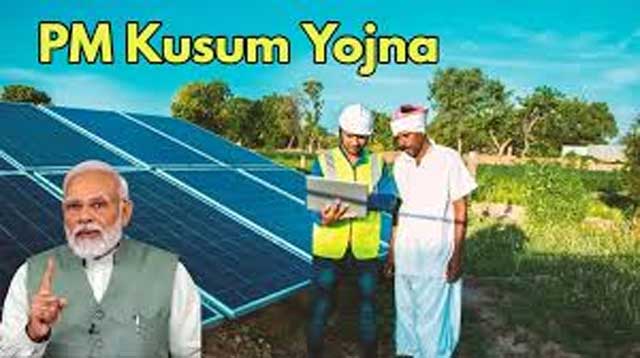Daijiworld Media Network – Mangaluru
Mangaluru, Aug 25: Despite its potential to provide a steady income and promote clean energy, not a single application has been submitted from Karnataka under Component-A of the Pradhan Mantri Kisan Urja Suraksha evam Utthaan Mahabhiyan (PM-KUSUM) scheme in the last six years.
PM-KUSUM aims to enable farmers to generate and use solar power on their own land and sell surplus electricity to distribution companies. However, the scheme has received little to no interest from Kannadigas since its launch in 2019.

The central government introduced PM-KUSUM to reduce dependency on diesel-powered irrigation, ensure reliable solar energy access for agricultural purposes, and increase farmers' income. The scheme comprises three components:
Component A – Decentralized Ground-Mounted Grid-Connected Renewable Power Plants
Component B – Installation of standalone solar agriculture pumps
Component C – Solarization of existing grid-connected agriculture pumps
Though components B and C have seen limited implementation, they still fall significantly short of the approved targets, according to a written reply by minister of state for new and renewable energy and power, Shripad Yesso Naik, in the Lok Sabha.
As of July 2025, under component B, Karnataka was sanctioned 41,365 solar pumps. However, only 2,388 have been installed so far. Under component C, 6.28 lakh pumps were approved for feeder-level solarization, but just 23,133 have been solarized. Additionally, there has been no demand for individual pump solarization under component C.
Under component A, farmers, farmer groups, cooperative societies, panchayats, farmer producer organizations (FPOs), and water user associations are eligible to set up solar power plants ranging from 500 kilowatts to 2 megawatts within 5 km of electricity substations. The electricity generated can be used by the farmers themselves, and any surplus power will be purchased by the government. This would not only help mitigate power issues but also offer farmers an alternative source of income.
Despite the scheme’s advantages, the lack of awareness or initiative has led to complete inactivity under component A in Karnataka, raising concerns about the dissemination and accessibility of central government schemes in the state.